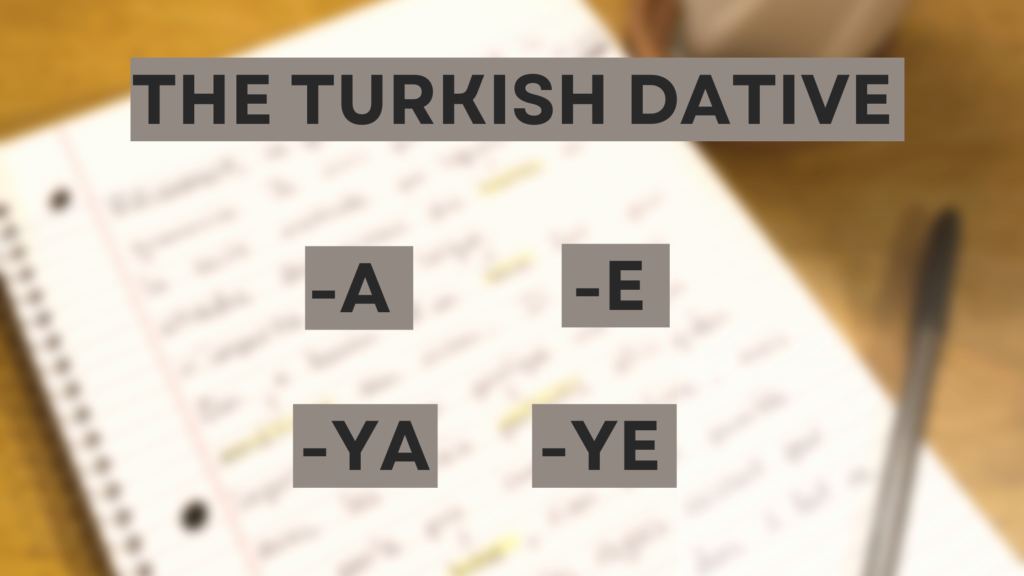The dative case of Turkish isn’t the most complicated noun case; the award goes to the accusative, which I have written about before. I think dative is a close second in terms of difficulty. However, how can we know when to use this case?

What is the Turkish dative case?
The simplest English translation for the Turkish dative case is “to,” but it gets more complicated. We can generally say it’s about direction, but, again, that’s an oversimplification.
How do form the dative case? The main vowel group that is connected with the dative case is -e and -a. If a noun ends in a vowel, there is a buffer of -y-, so all the dative endings enumerated are: -a, -ya, -e, -ye.
Here are 4 rules to know when to use the Turkish dative case:
Rule 1: Destination of a verb of motion
This is the most straightforward rule. This is the direct translation of “to.” When you use gitmek, gelmek, or uçmak, you will use the dative case to show direction towards.
Saat sekizde işe gittim.
= I went to work at 8 o’clock.
İşten sonra hemen eve gel.
= Come home right after work.
Rule 2: Recipient of a verb of giving, showing, or telling
In grammatical terms, the dative case is for indirect objects. In English, we sometimes use “to” with indirect objects depending on their position in the sentence. However, Turkish indirect objects always get dative marker.
Kim adama parayı verdi?
= Who gave the money to the man?
Annene resmini gösterdin.
= You showed the picture to your mom.
Rule 3: Price
This rule doesn’t seem logical to me as a native English speaker, but I can appreciate that it’s consistent. If you use [for + price] in English, you will use the dative in Turkish.
İki dolara bu kitabı aldığıma inanabiliyor musun?
= Can you believe I bought this book for 2 dollars?
Üç milyon liraya evini sattı.
= He sold his house for three million lira.
Rule 4: The object of particular verbs, adjectives, or prepositions
This is the illogical, unpredictable rule. With the other rules, you could at least some consistency. However, there are so many situations where you use the dative case “just because it goes with that word.” This is the “just-memorize-that-it-matches-that-word” rule.
I snuck inanmak into the last example. You might notice that inanmak (to believe) takes the dative case because of the word right before it, aldığıma = (lit.) to my buying. In English, believe takes a direct object, but in Turkish it takes an indirect object. There is no logic to knowing that inanmak takes the dative case; you just have to memorize it.
The same is true for some major adjectives like yakın or prepositions (postpositions, actually) like göre.
Kardeşime yardım ediyorum.
= I am helping my sibling.
Bizimkilere uygun bir film seçmeliyim.
= I have to choose a movie suitable for my parents.
Rapora göre o adam ölmüş.
= According to the report, that man died.
Summary
- Direction: going to…, coming to…
- Receiving an action: giving to…, sending to…, saying to…
- Price: for $100
- Fixed complement of a verb, adjective, or postposition: (lol good luck; no logical example)
The dative case is relatively straightforward. I don’t think it’s too hard for native English speakers to know when to use the dative case in 80% of cases. In the other 20% of cases, it’s just because that word always takes a dative noun, so good luck.
If you want more Turkish learning help, I have more on my website.
I also have a Turkish resource page for Turkish learners.
In addition, I recommend my YouTube channel to see my language journeys for yourself.
Good luck with your Türkçe!